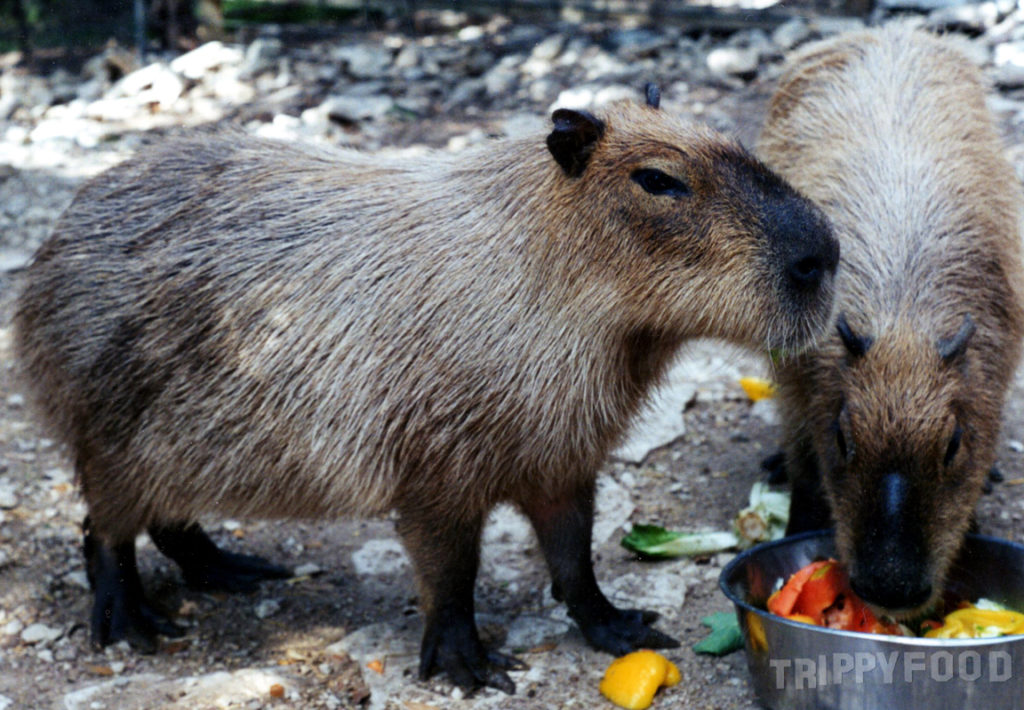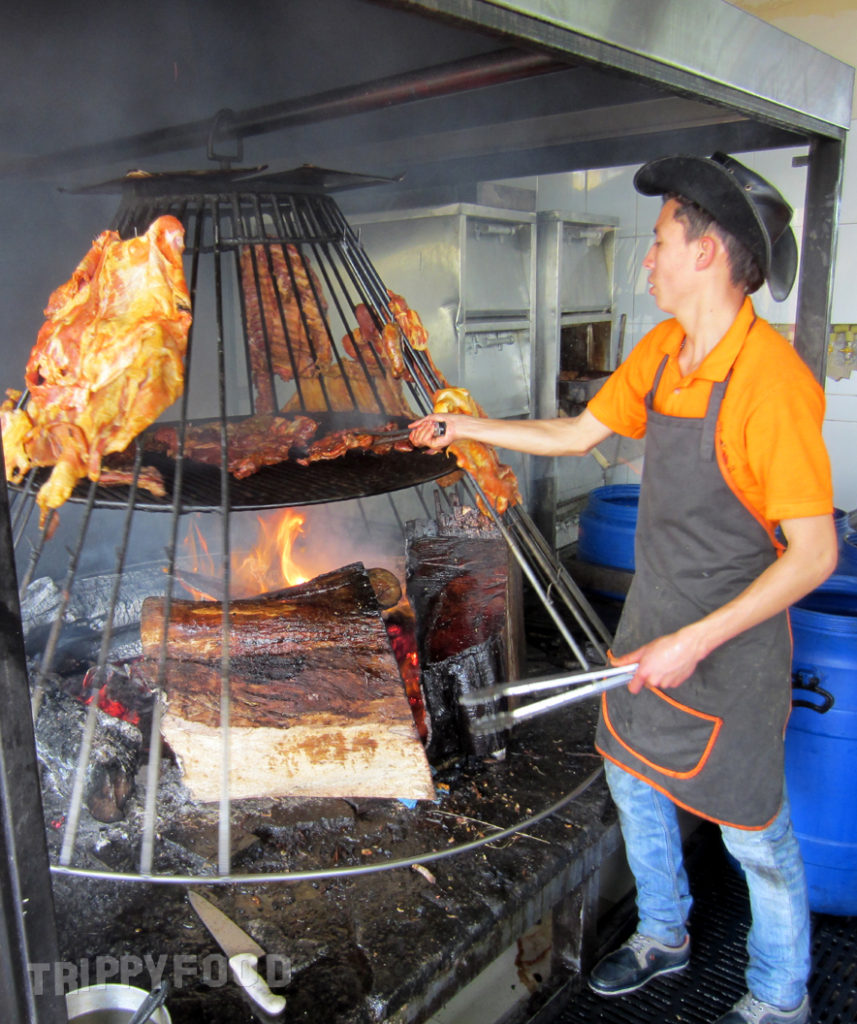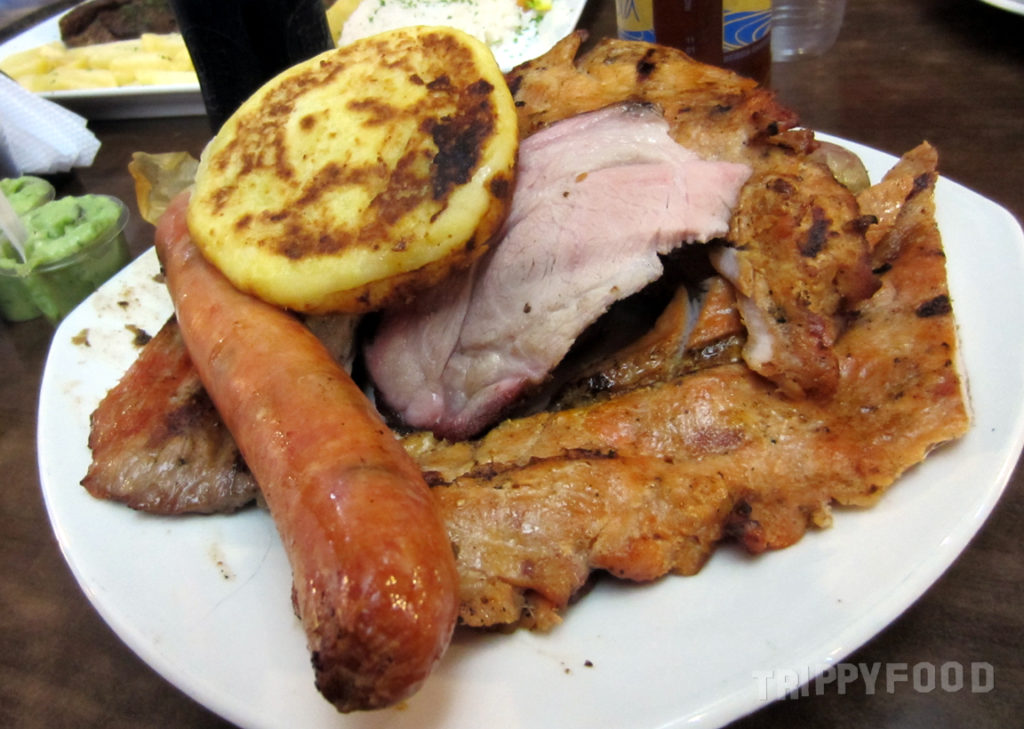capybara / chigüiro

The capybara can be found in most South American countries, with a particularly large population in the Amazon. Its name comes from the Brazilian Tupi language meaning “one who eats slender leaves”, since their herbivorous diet is comprised mainly of grasses (although they augment that with vegetables, grains, and their own presumably delicious feces).
Danny Blackner is an actor who is relegated to cinematic obscurity, although one role is particularly memorable – as one of the R.O.U.S. (Rodents Of Unusual Size) that Dread Pirate Roberts battles in the Fire Swamp in The Princess Bride. While the capybara falls a few feet short of matching the size of one of Florin’s formidable creatures, they are truly rodents of unusual size. These dog-sized, semi-aquatic cousins of Mickey Mouse run between three and a half to four and a half feet long from nose to stubby little tail, and stand on deer-like legs at a height of around two feet to the shoulders. An adult can weigh anywhere from 70 to 150 pounds.
They’re relatively docile animals, and although they’re essentially giant rats, they’re relatively cute, which makes them desirable as pets. The United States is still wary about making the capybara man’s best friend, but currently they’re legal to keep in Pennsylvania and Texas; being semi-aquatic, they require an environment with a lot of water. In 2011, reports of an odd looking creature was reported near a water treatment plant in Los Robles, California; authorities finally caught up with what was an escaped capybara, but never determined from which joint he busted out.

In South America, the capybara (known in some countries, including Colombia as chigüiro) is hunted for its meat and for its skin (which is used to produce carpincho leather), as well as its fat for pharmaceutical products. Capybara have become livestock in many areas where they’re farm-raised specifically for food. The meat has always been a staple of the indigenous peoples, but over the past decade or so chigüiro has found its way onto the menus of even a few upscale restaurants.
Many South American countries have large Catholic populations, and thanks to a dispensation by the Church, capybara meat is permissible to eat during Lent since it’s strangely considered seafood. In Bogotá, Colombia and its surrounding communities, chigüiro has become a popular item at asaderos (roasters). At restaurants such as Leños y Palos, the meat is draped over conical wire racks suspended above an open wood fire and then cut into steak-sized pieces. Because of its similarity in size and texture to pork tenderloin, it generally goes unrecognized as rodent flesh by unsuspecting diners who are unfamiliar with the name.
My first experience with chigüiro was interesting; I ordered it after having a sample from a butcher block on the street in front of the restaurant, but not knowing what it was. As I knife-and-forked my way through a sweet slab of the meat, I asked the server, “¿Qué tipo de animal es un chigüiro?”, to which he responded in kind to the butcher at the front of the asadero, “Es como un cerdo pero no es un cerdo”. He proceeded to give me the “un momento” index finger while he initiated a Google image search for it on his iPhone. When he handed me the phone with the search results, my dining companions were wondering why I was sporting an ear-to-ear grin as tears of joy tumbled down my cheeks – I simply looked at them and said, “Capybara”.

Visually-minded people may find the consumption of some rodents a tad off-putting; the joy of ordering cuy off the menu for the first time at a Peruvian restaurant can be dulled by the screams of horror as an intact roasted Guinea pig is brought to the table splayed out across a bed of potatoes. The same is not true for capybara since the animal’s size requires that the meat be butchered to manageable segments. Don’t let the capybara’s disreputable rat cousins dissuade you from sampling this South American delicacy; if you find yourself in a restaurant with chigüiro on the menu, and your dining companions suggest an order or two, close your menu and respond with a smile and say, “As you wish”.
Leños y Palos
Cra. 7 #20-86
Bogotá, Colombia
Twitter: @LenosyPalosOfi
GPS Coordinates: 4°36’25.0″N 74°04’15.4″W
Restaurante Brasas Llaneras
# a 6-144, Cl. 2 #62
Cajicá, Colombia
GPS Coordinates: 4°55’01.0″N 74°01’38.3″W
GALLERY: See images of capybaras and the places that prepare it as food
VIDEO: Watch Val enjoy a serving of chigüiro at Leños y Palos in el Centro de Bogotá: https://www.youtube.com/watch?v=rx1_UpFSURk

